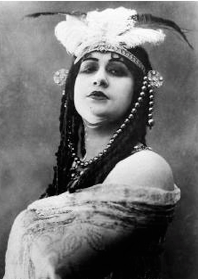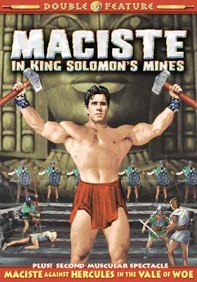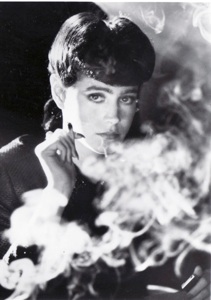Italian 270

Cabiria
I. A History Lesson, Part I
-
A.The Second Punic War, from Cannae to Zama
-
B.Hannibal, Scipio, Masinissa, Sophonisba, Syphax—all historical
-
C.Fulvius Axilla, Maciste, Cabiria—all invented
-
D.Essential outline: Italy was threatened by Africa, almost destroyed, but then took the fight to the enemy and won, turning Africa into a Roman colony
II. A History Lesson, Part II
-
A.Italy unifies in 1865 (complete in 1922); feels “belated”
-
B.The scramble for Africa
-
C.Italy is defeated by Ethiopa in 1896; acquires Somalia 1890, Eritrea in 1899
-
D.1911-12, the Italo-Turkish War
-
i.despite outnumbering the enemy 4 to 1, at best a stalemate
-
ii.minor territorial gains (approx. 1% Africa), extremely costly
-
iii.Italian brutality (public execution, concentration camps)
-
E.This is the immediate historical-political setting for Cabiria
III. Cabiria
-
A.Effective combination of elements
-
i.an imaginary threat to national security used to drum up public support for an unjustified, costly and pointless war in Middle East
-
ii.a romantic triangle (Masinissa, Sophonisba, Syphax)
-
iii.Orientalism
-
iv.a frustrated marriage
-
v.the Diva
-
B.A series of colonial fantasies
-
i.they threaten our little girls and young women
-
ii.the fantasy of total control
-
iii.and yet, servitude = freedom
-
iv.Orientalist fantasies are too many to count (human sacrifice; the grasping Jewish innkeeper; Oriental luxury (especially Sophonisba); the exotic (e.g., leopard); effeminate men and powerful women…)
-
C.Romances are mediated
-
i.Masinissa, Sophonisba and Syphax are mediated by Scipio
-
ii.But Sophonisba escapes from this mediation; she is excessive
-
iii.Fulvius Axilla and Cabiria are mediated by Maciste, who is also excessive, but in different ways
-
D.Production and Reception
-
i.Epic in quality and length
-
ii.Marked as a “quality” production (d’Annunzio)
-
iv.Read as an inspirational “national allegory”
IV. The Afterlife of Cabiria
-
A.Extremely influential: D. W. Griffith saw it and decided feature-length films were commercially possible
-
B.The dolly shot—in general, the film was technically inspiring
-
C.From 1915-1926, Bartolomeo Pagano made over 25 films as “Maciste”
-
i.primary role, rather than supporting
-
ii.immediately presented as white
-
iii.unlimited by time or space: appears as a soldier, mountain climber, tourist, detective, in Japan, in China, in the Middle East, in South America, and even travels to Hell
-
D.Maciste returned again in the peplum (1958-1965)
-
E.Certain images from Cabiria, such as the Temple of Moloch, are fixed in our visual culture
-
i.The Temple of Vaal, from Star Trek’s “The Apple” (1967)
-
ii.The Temple of Kali, from Raiders of the Lost Ark (1984)
-
iii.Maciste’s mill become Conan’s “Wheel of Pain” in Conan the Barbarian (1982)
V. Early Italian Film
-
A.The Lumière brothers “invent” cinema in 1895
-
B.From bioscope to stable theaters (1905-1907)
-
C.“First” Italian film: La presa di Roma (1905)
-
D.Brunetta’s keyword: “epic”
-
E.1905-1912, the “gold rush”, move from Turin to Rome
-
F.Specialties: historical films (Quo vadis?, Last Days of Pompeii), divas, landscapes and lighting—and hence “realism”






